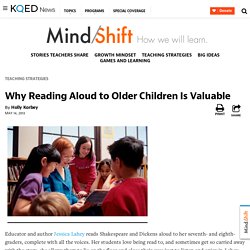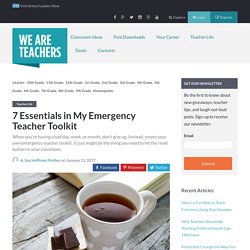

Examining Teachers’ Beliefs About the Role of Technology in the Elementary Classroom. Are We Innovating, or Just Digitizing Traditional Teaching? A few months ago, I noticed an increased amount of discussion around the notion of blended learning.

Many of these conversations started on a similar note: “We’re blended—all of our teachers use Google Classroom” (or Edmodo, Schoology, Canvas, Moodle, etc.). However, in probing further, I often discovered that these tools had merely digitized existing content and classroom procedures. Instead of filling an inbox on the teacher’s desk with packets and worksheets, students now completed the exact same procedures online. Rather than write homework assignments on the board, teachers posted them to the students’ digital news feeds. While blended learning brings with it the promise of innovation, there is the peril that it will perpetuate and replicate existing practices with newer, more expensive tools.
The Peril The dissemination of digitized, teacher-driven content is not full blended learning. The Promise. Carol Dweck: The power of believing that you can improve. Why Reading Aloud to Older Children Is Valuable. Educator and author Jessica Lahey reads Shakespeare and Dickens aloud to her seventh- and eighth-graders, complete with all the voices.

Her students love being read to, and sometimes get so carried away with the story, she allows them to lie on the floor and close their eyes just to listen and enjoy it. Lahey reads short stories aloud, too: “My favorite story to read out loud has to be Poe’s ‘Tell-tale Heart.’ I heighten the tension and get a little nuts-o as the narrator starts to really go off the rails. So much fun.” Classroom Management to Handle Behavioral Problems. Using classroom management to control students’ behavior is by far one of the most challenging tasks that teachers have.

A lot of the time, teachers are completely unaware of what is going on in their students’ home lives, which oftentimes is the reason for the students’ undesirable behavior in school. Likewise, as students grow up, they have to deal with a variety of social and emotional changes that may result in the disruption of their behavior. However, with a little forethought and some creative classroom management, teachers can turn their students’ unfavorable behavior around. Here are a few classroom management steps to help you approach behavioral problems in your class, as well as a few teaching strategies to help you handle those behavioral problems. Classroom Management to Approach the Behavioral Problem Follow these three steps to help you determine what the students’ behavioral problem is, so that you can figure out how to fix it. 1. 2. 3.
Trib. All educators care deeply about their students' motivation.

They want them to love learning, and to be resourceful and persistent in the face of learning challenges. They don't want their students to lose heart when they get stuck, make mistakes, or receive disappointing grades. In this context, the growth mindset entered the scene. A growth mindset is the belief that you can develop your talents and abilities through hard work, good strategies, and help from others. Fostering a Long-Lasting Love of Teaching. By Cristie Watson It is February, and as usual, I love my students.

I no longer feel the polite, anxious, and determined love of August, but a more genuine affection that comes from really knowing them. By this point in the year, my students and I have figured each other out. 7 Essentials in My Emergency Teacher Toolkit - WeAreTeachers. It’s stressful being a teacher.

This is a world that few others can understand. You’re essentially a stand-in parent to 20, 30—or in my case, 150—children for seven or eight hours of the day. It’s hard not to get overwhelmed by all the well-meaning questions from kids or the phone calls and emails from parents. Blogging Is The Law. Public vs. Private – Should Student Work Be Public On the Web? 10+ years ago, filters and blocking tools were banning access to most blogs and web publishing services in schools around the world.

In fact, this is exactly why The Edublog Awards were started – to showcase the excellent work being done with blogging in schools – hoping it would begin to break down these barriers and change the minds of nervous administrators and teachers. Perhaps it worked! We’ve made significant progress since, as services like Edublogs are hardly ever blocked in schools now. And the use of blogs in education for many is integral to lessons and student learning. So today, I propose starting a new important fight, through debate and discussion, that could significantly change the way most are currently blogging in schools… Should students be allowed to publish school work publicly on the web? We get asked this question constantly. For teachers, it’s not just what you say, it’s how you say it. Credit: Alison Yin for EdSource Today Denisia Wash, a kindergarten teacher in Berkeley, didn’t want to use a sugary voice when she talked to her 5-year-old students – they weren’t babies and that voice wasn’t actually effective, she said.

But she didn’t want to use a sharp-edged voice either, the impatient tone that can come out when she’s tired or under pressure. “I call that teacher voice my ‘stress voice,’” she said. Last year, she conducted an experiment as part of her evaluation at Berkeley Unified.